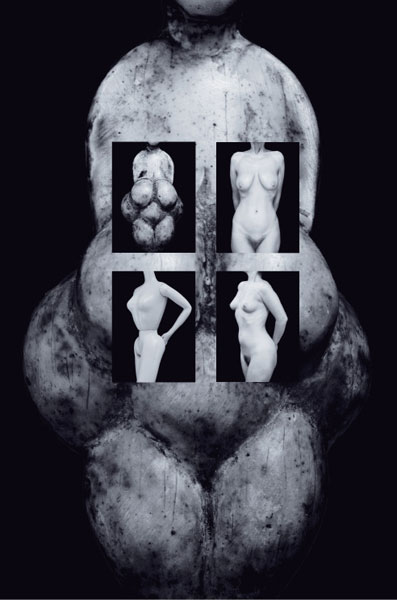Peta Clancy is a visual artist based in Melbourne, Australia, who works with photography, bioart, video and installation. She investigates the intersection of art and biological processes, and has undertaken an indepth exploration of the skin as a porous membrane. |
Paper Thin from the series Pierce 2007
|
 |
| Lips 1 from the series She carries it all like a map on her skin2005-2006 |
The genetic genie installation explored the image of the chromosome in a broader cultural context. The form of the chromosome (inflated sculpture) was based on a karyotype of Peta Clancy’s own chromosomes. For this project Peta Clancy worked in collaboration with Erik Hable and Sylvia Kranawetvogl.
A concern of both of these artists is who we are within our body and in the larger world. Coming across two visually disparate artists is a serendipity that provokes a new direction for thought.
Marjorie Salvaterra’s images reveal “a fine line between sanity and insanity,” according to Virginia Heckart, Assoc Marjorie Salvaterra’s images reveal “a fine line between sanity and insanity,” according to Virginia Heckart, Associate Curator of Photography at The Getty. of Photography at The Getty Center.
All work below from the series, HER.
"....I’m forty three years-old and I’m trying to grow as a person but so is my skin. I’m not that interested in holding onto my youth. My life is far greater now. But letting go isn’t as easy as it sounds. Some days I don’t recognize this person who looks back at me in the mirror. She is older, has responsibilities. She has had to learn that sometimes God has a bigger plan for her life than she does. Not everything goes the way she wants it to go. Things happen. Money comes and goes. So do jobs. As well as friends....With HER, she turns away from the mirror and turns the camera on her own life -- examining the psychology of her age and her gender in black and white, through surreal interpretations and exaggerated gestures, reminiscent of Italian cinema, creating photographs that reflect the universal idea of womanhood and assure HER that she is not on this path alone."
















































